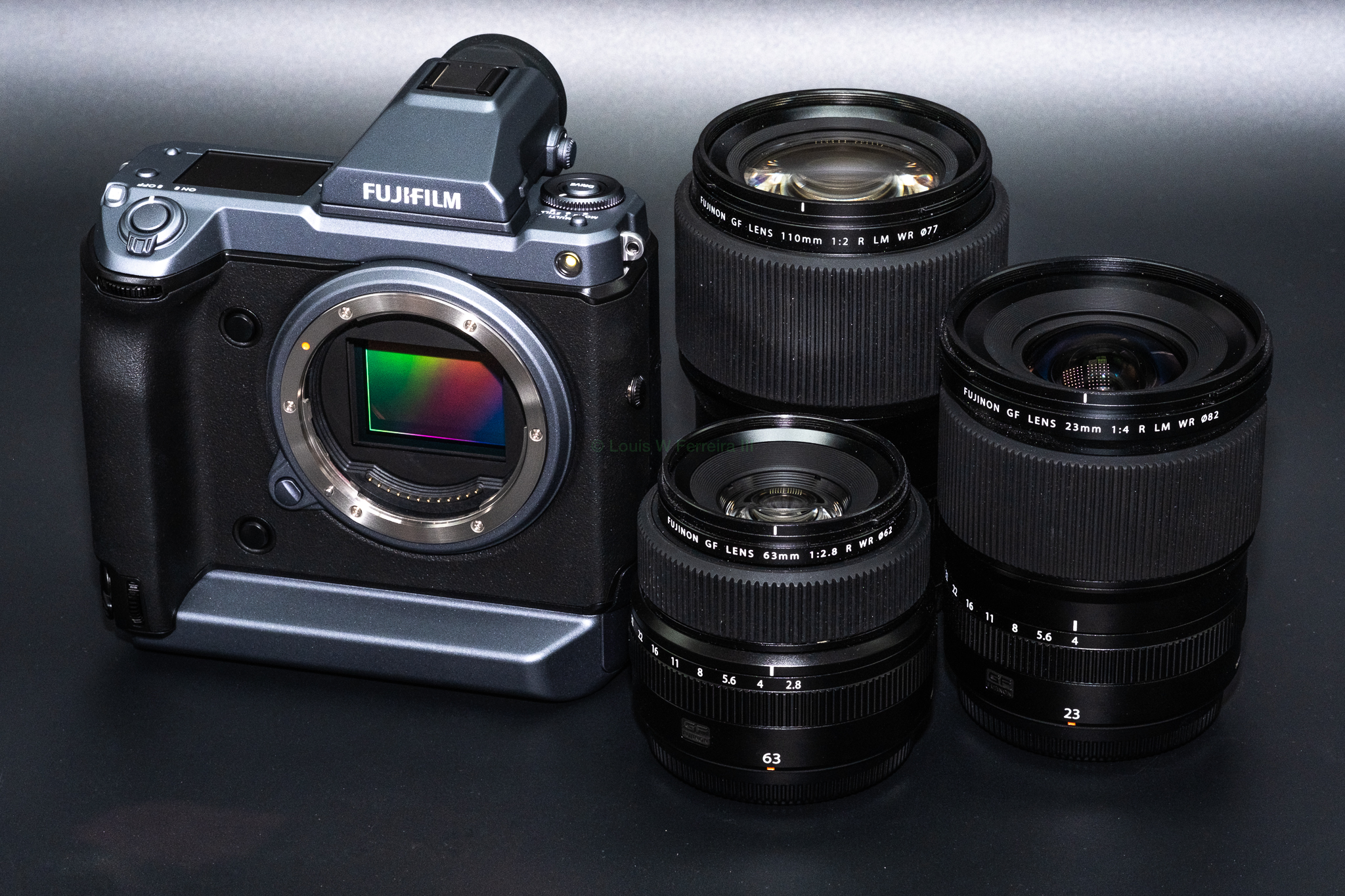
Jim Kasson has published some additional GFX100 testing in addition to an interesting post about color science that is worth a read. Below are links and quotes from all his new testing that might interest you. You can catch up on what we have covered in theses four posts first round-up here, the second round-up here, the third round-up here, the fourth round-up here and the fifth round-up here. Below you can find his most recent tests.
The Last Word – Roles of camera and raw developer in determining color
It’s not all in the raw developer. As an example, let’s imagine that a Sony a7RIV sees two spectra that resolve to different colors as the same. No profile will be able to tell which of those spectra produced which set of values in the raw file, and the two different colors will look like the same color in the final image. Now let’s imagine that a Nikon Z7 sees two other different-color spectra as the same, but the Sony sees them as different. The Sony and the Nikon cameras will not produce the same colors from a scene containing the spectra above.
The Last Word – a7RIV vs GFX 100 landscape IQ with GigaPixel AI — part 1
I earlier observed that I thought the biggest advantage of the GFX 100 over the GFX 50x was not increased sharpness, but decreased aliasing. There is no aliasing in the crops above that is immediately obvious to me, but I’m sure that there is aliasing there, and one of the functions of aliasing is to turn high spatial frequency hard-to-see small details into lower frequency easier-to-see — but wrong — details. That may be a partial reason for the Sony images surprising sharpness.
The Last Word – a7RIV vs GFX 100 landscape IQ with GigaPixel AI — part 2
I won’t show you the images because my blog is not set up for files so large, but 2000-pixel-high GigaPixel AI-resampled crops also favor the GFX 100.
The Last Word – Sony a7RIV vs Fuji GFX 100 landscape IQ
It’s closer, but the GFX 100 is still distinctly better.
Why didn’t I use the Sony pixel-shift feature for this scene. I have found that for landscape use in general, that motion artifacts make it unusable. There are some landscape subjects — like roots and rocks — that work fine with pixel shift, but foliage does not, even when you think the wind is still.
The Last Word – Fuji 45 mm f/2.8 on GFX 100
Diffraction is adversely affecting the f/8 image, although not enough to keep that from being an excellent choice for landscapes.
The Last Word – GFX 100 w/ Fuji 45/2.8 vs a7RIV w/ Sigma 35/1.2
The Sigma is excellent here. The Fuji is fine; remember it has a bigger sensor to cover, even though the pitch is the same.
These are both impressive lenses. The Fujifilm combination weighs only 115 grams more than the Sigma/Sony pair, so the Sigma is impressive in its sheer bulk, too.
The Last Word – Image quality effects of format size — example 1
I don’t have any difficulty picking a winner here, and it’s the image directly above. And the Fuji 63 is not the best lens in the Fuji lineup; if I had to rank them, I’d put it next to last. Not that it’s bad, by any means; you can see that above.
DPR just posted an article anointing the a7RIV as the best landscape camera. I would quarrel with that. They didn’t consider the GFX 100, but I think they should have done so.
The Last Word – Image quality effects of format size — example 2
Again, we have the same clear winner.
Fujifilm GFX News, Rumors, and Collaboration
Fujifilm GFX Owners Group
Fujifilm GFX Page
Follow Fujiaddict on Facebook, Twitter, Instagram, and YouTube
